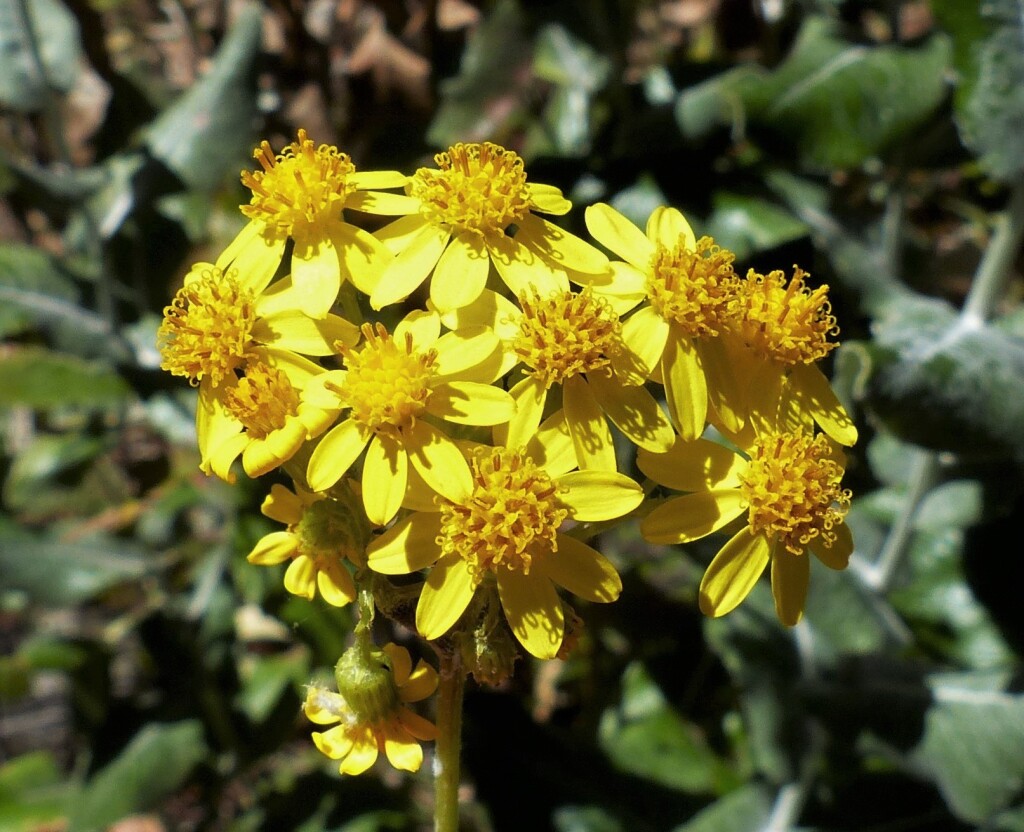Senecio garlandii
F.Muell. ex BelcherErect perennial to c. 1 m high; stems densely white-cottony. Leaves ovate or elliptic, 8–15 cm long, 3–9 cm wide, those of main axes sessile, cordate at base and stem-clasping, those of lateral branches often tapered at base and petiolate; margins dentate; upper surface glabrous or retaining some cottony hairs; lower surface densely white-cottony. Inflorescence corymbose, c. 5–15 cm across; capitula 20–80 or more, radiate; involucre broadly campanulate, c. 4 mm long, glabrous; bracts c. 13; bracteoles 5–7. Ray florets 7–10, yellow, ligules c. 4 mm long; disc florets c. 20–25, yellow. Cypselas obloid, c. 2 mm long, light brown, appressed-papillose, grooved; pappus of slender white hairs 4–5 mm long, deciduous. Flowers Aug.–Nov.
NIS. Also NSW. Known in Victoria only from small populations near Chiltern (first collected 1996) and near Walwa (2012), both in the far north-east of the state, and occurring in dry forest on stony soil.
Walsh, N.G. (1999). Senecio. In: Walsh, N.G.; Entwisle, T.J., Flora of Victoria Vol. 4, Cornaceae to Asteraceae, pp. 941–965. Inkata Press, Melbourne.
 Spinning
Spinning

